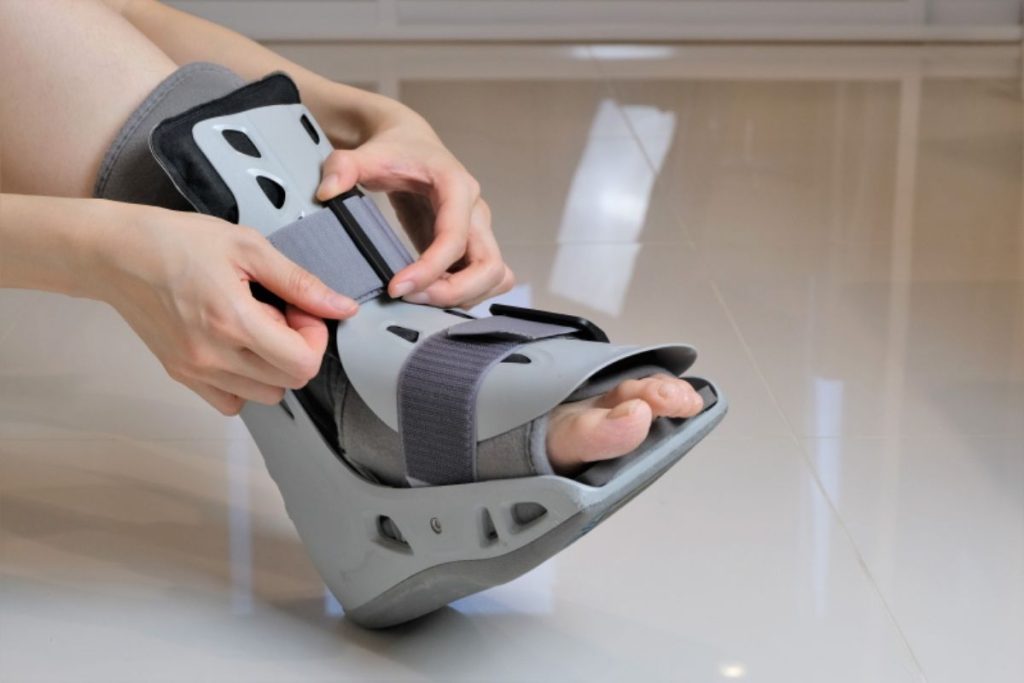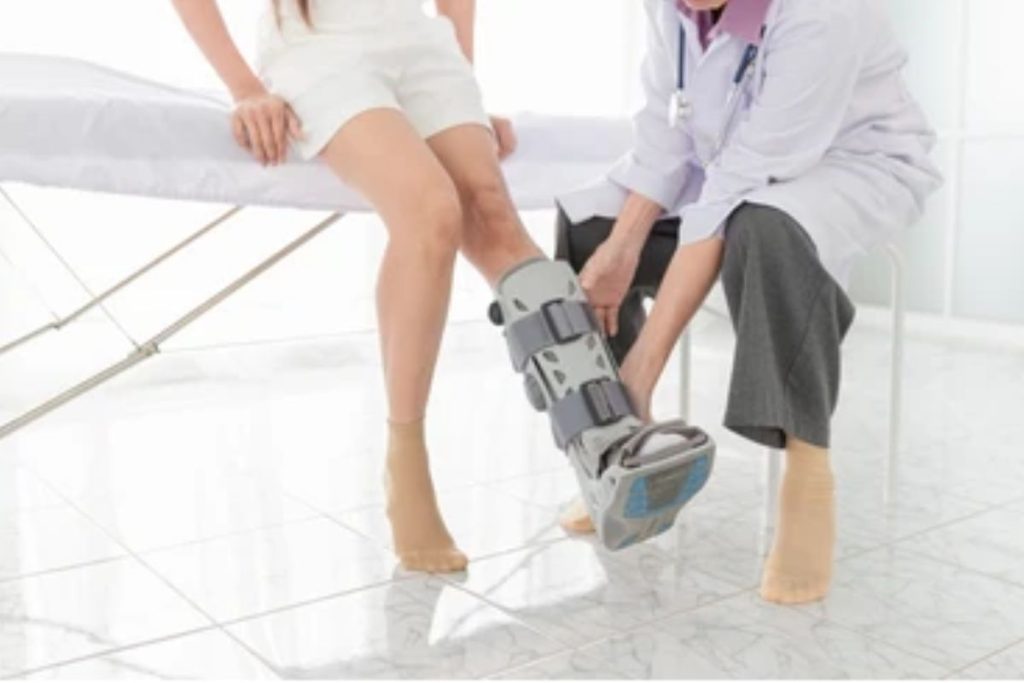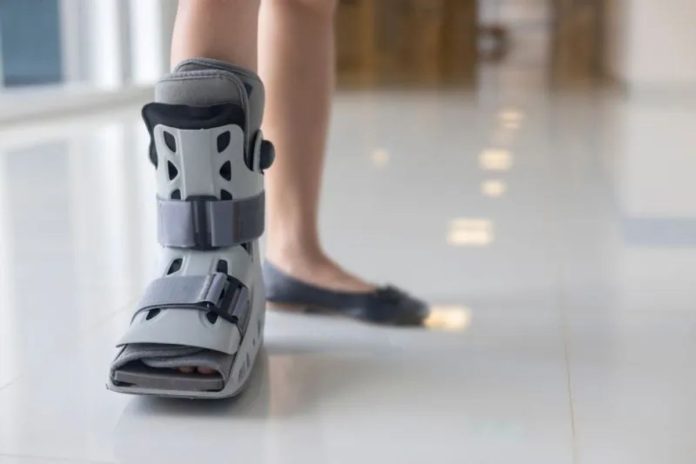Orthopedic walking boots and CAM (controlled ankle movement) boots, commonly referred to as walking boots, are prescribed to aid rehabilitation following foot or ankle injuries, fractures, or surgeries.
While effective at promoting healing by stabilizing the affected area, there are side effects of wearing a walking boot that people experience during recovery. Adjusting to these effects is critical to managing pain and preventing further complications.
In this article, we will discuss the most common side effects, how to mitigate them, and what to anticipate during recovery.
Why Walking Boots Are Used
Walking boots have specific objectives, and understanding them is important before analyzing the side effects of wearing a walking boot. Walking boots are used to:
- Prevent movement of the foot and/or ankle to promote healing
- Decrease the amount of weight placed on the injured limb
- Ensure comfort and cushioning are provided
- In some instances, replace traditional plaster casts
Common reasons for using walking boots include achilles tendonitis, plantar fasciitis, ankle sprains, stress fractures, post-operative recovery, and ligament tears.
Muscle Weakness and Atrophy
Atrophy in the leg is arguably one of the muscle side effects of a walking boot. When walking boots are used, there is no movement and weight bearing permitted, which leads to surrounding muscles atrophy. Some of the most affected muscles are:
- The calf muscles
- The quadriceps (thigh muscles)
- Foot intrinsic muscles
What You Can Do
- Begin gentle rehabilitation exercises after consultation with your doctor
- Perform range of motion stretching exercises to prevent stiffness in movement.
- Some other therapies may help in the recovery phase to get back the lost muscle strength.
Changes in Gait and Posture

The height difference created by wearing the boot on one leg tends to force the body to redistribute its weight, leading to new stress patterns in the hips, knees, and spine, which more often than not results in back pain, hip pain, or pain in the non-injured leg.
How to Manage Gait Changes
- Correct limb deficiency with a foot orthotic on the non-injured side.
- For balance maintenance, a cane or crutch might be useful.
- With relation to locomotion, observe your alignment and posture.
Skin Irritation and Blisters
Another possible side effect of wearing a walking boot for extended periods of time is skin irritation. It is not uncommon to get blisters, rashes, or pressure sores due to the boot’s interior lining rubbing against one’s skin. Moisture build-up within the boot can exacerbate the situation, especially in warm regions.
Prevention and Care
- Always wear a clean, moisture-wicking sock inside the boot
- Keep your skin dry and clean
- Check your skin daily for redness, blisters, or bruising
- Use padding or liners if needed to reduce friction
Blood Circulation Problems
Limited mobility and compression from the boot can affect blood flow, particularly if the boot is too tight. Some patients may experience swelling, numbness, or even develop blood clots in rare cases. Swelling is a normal part of injury recovery, but it can be worsened if the boot is not properly adjusted.
Warning Signs
- Severe or prolonged swelling
- Tingling or numbness
- Coldness in toes or foot
- Color changes in the skin
If any of these symptoms appear, it’s important to contact your healthcare provider immediately.
Mental and Emotional Effects
Though less discussed, the side effects of wearing a walking boot also include emotional and mental strain. Being restricted in your mobility, unable to exercise or participate in daily activities, can lead to frustration, stress, and even depression. Many patients feel isolated during recovery or worry about how long it will take to get back to normal.
Mental Health Tips
- Stay in touch with friends and family
- Ask your doctor what activities you can safely do
- Practice mindfulness, meditation, or journaling
- Join online support communities for people in recovery
How to Reduce the Side Effects of Wearing a Walking Boot
While you can’t completely avoid the side effects of wearing a walking boot, there are several steps you can take to minimize discomfort:
- Follow your doctor’s instructions: Never skip follow-up appointments and always ask questions if you’re unsure about your recovery.
- Maintain mobility as much as possible: Move your toes and stretch your leg when seated.
- Use supportive aids: Shoe lifts, walkers, or crutches can help improve your comfort.
- Wear the boot only as prescribed: Don’t overuse it if it’s meant to be used part-time, and don’t remove it without permission if full-time use is required.
Recovery Timeline with a Walking Boot
Every injury is different, but most people wear a walking boot for 4 to 8 weeks. Here’s a rough guide to what to expect:
- Weeks 1–2: Swelling and discomfort may be at their peak. Rest and elevation are key.
- Weeks 3–4: Begin to gradually bear more weight (if cleared by your doctor). Start mobility exercises.
- Weeks 5–6: Discomfort should reduce. Gait and strength training might begin.
- Weeks 7–8: Taper off boot usage and begin physical therapy or light walking in regular shoes.
Your doctor or physical therapist may recommend imaging tests or assessments before discontinuing the boot.
When to See a Doctor

If you experience any of the following while wearing a walking boot, see a healthcare professional immediately:
- Sudden increase in pain or swelling
- Fever or signs of infection
- Numbness or tingling in your foot or toes
- Open sores or bleeding under the boot
- Loss of mobility or inability to bear any weight
Alternatives to Walking Boots
If the side effects of wearing a walking boot are too severe, based on your healing trajectory, your doctor might assess you for alternative solutions such as
- Ankle wraps or removable braces
- Knee scooters for non-weight-bearing injuries
- Custom made orthotic insoles for minors’ injuries
Discuss these options with your medical team if you find the walking boot to be unbearable.
Read More: Relaxation Techniques
Conclusion
Although walking boots are useful in providing support and healing in foot and ankle injuries, they do come with their downsides. Skin irritation or psychological ‘stress’ are some of the consequences that can occur due to shifting walking patterns if a proper plan is not put in place.
Ideally, the right strategy, tools, and advice from medical professionals can aid in reducing the side effects and smoothening the recovery process.
As with any new activity during recovery, it is important to speak to your doctor about adjusting how you wear your walking boot. Remember that keeping the right attitude and having sufficient support will set you towards recovering your movement in no time.














